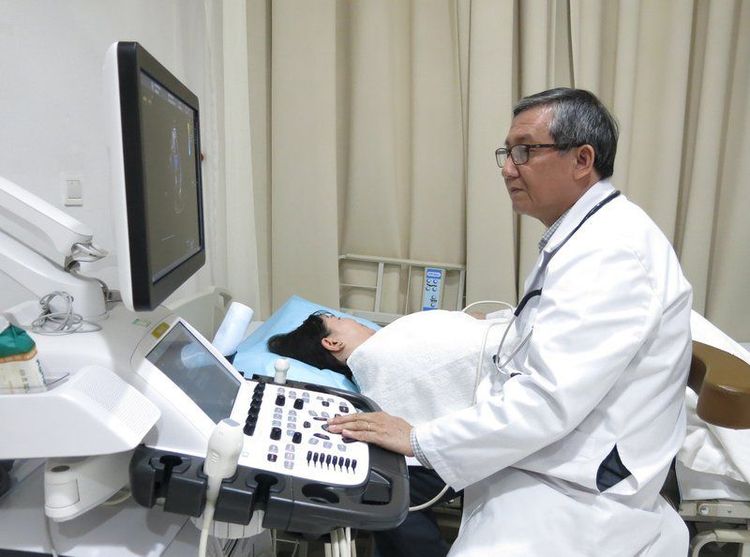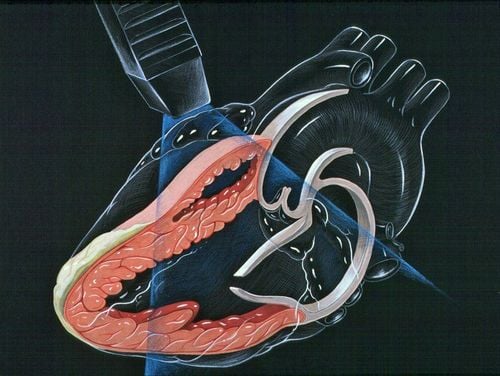This is an automatically translated article.
The article is professionally consulted by BSCK II Nguyen Quoc Viet - Department of Medical Examination & Internal Medicine - Vinmec Danang International General Hospital.
Ejection Fraction is a measure of the heart's pumping function. Based on this index, the doctor can diagnose whether the patient has heart failure or another type of cardiovascular disease.
1. Definition
Ejection fraction (EF) is a number used to measure the work of the heart to pump blood, calculated as the percentage of blood pumped out of the heart during each beat. There are left and right ventricular ejection fractions corresponding to the left and right ventricles:
1.1 Left ventricular ejection fraction (LVEF) Left ventricular ejection fraction (LVEF) is calculated as the percentage of blood pumped out from the left ventricle (lower, left chamber of the heart) during each stroke.
1.2 Right ventricular ejection fraction (RVEF) Right ventricular ejection fraction (RVEF) is calculated as the percentage of blood pumped out of the right ventricular chamber (lower, right heart chamber) to the lungs in each stroke.
There are many methods to measure ejection fraction such as: echocardiography; cardiac catheterization - by imaging; Magnetic resonance imaging, computed tomography, radioisotope scanning. Among them, echocardiography is considered the most common method to measure ejection fraction
When it comes to ejection fraction usually refers to left ventricular ejection fraction.
Trắc nghiệm: Huyết áp của bạn có đang thực sự tốt?
Huyết áp cao hay thấp đều ảnh hưởng đến tình trạng sức khỏe con người. Để biết tình trạng huyết áp của bạn có thực sự tốt không, hãy làm bài trắc nghiệm sau đây để đánh giá.2. Normal/abnormal parameters
Ejection fraction is normal in the range of 50-70%, which is the ideal level for the heart to properly supply blood to the body's needs. For example, a patient with an EF of 67% demonstrates function. systolic within normal limits. Based on the change of ejection fraction index, it is possible to evaluate heart function and diagnose some cardiovascular diseases.Ejection fraction > 75%: suggestive of hypertrophic cardiomyopathy. Ejection fraction EF < 50%: Signaling poor pumping of the heart, not meeting the body's needs, which can lead to heart failure.

3. Warning risks when EF is abnormal
When the ejection fraction is low, a warning of a heart failure condition, the patient may experience some early symptoms of heart failure such as:
Shortness of breath, possibly difficulty breathing when doing light work, doing housework, As heart failure worsens, the person may have difficulty breathing even at rest. Swelling, swelling in the feet, legs: signs of fluid retention in the peripheral because the heart does not have enough work to bring blood back from the great circulation. Fatigue: This is the earliest and most common sign. Abnormally fast heart rate: due to increased heart contractility to compensate for the lack of blood supply. Depending on the degree of EF reduction, patients have different degrees of heart failure.
EF from 40-49%: Indicates that the heart is no longer able to pump blood effectively to meet the body's needs, warning the risk of heart failure. EF from 35-39%: Can be considered as diagnostic criteria for heart failure. However, it is still possible to meet clinical cases where patients with diastolic heart failure have a complete EF within the normal range. EF less than 35%: This is a case of high risk of arrhythmia, possibly sudden, life-threatening cardiac arrest.
4. What to watch out for when ejection fraction decreases

When the ejection fraction decreases, depending on the degree of reduction, the doctor can give recommendations to improve the EF:
4.1 Limit salt When EF is low, the heart's ability to work and pump blood is reduced. Leads to a certain amount of fluid stagnation in the circulatory system, the body appears symptoms such as shortness of breath, edema... Therefore, it is necessary to limit the amount of salt put into the body, to limit the amount of fluid going. with salt, helping to reduce the burden on the heart.
4.2 Limiting the amount of fluid in the body Patients with low EF, diagnosed with heart failure need to calculate the amount of fluid in accordance with the working and pumping status of the heart.
4.3 Exercise Regularly Exercising for at least 30 minutes a day and at least 5 days a week has been shown to promote cardiovascular health and improve effective ejection fraction.
In cases where the patient is poorly responsive to medications and supportive treatments, a subcutaneous pacemaker is indicated to prevent sudden, life-threatening cardiac arrest.
For patients with heart failure, in addition to the ability to predict the disease, EF also has a very important meaning in evaluating the effectiveness of treatment. The change in EF indicates whether the treatment is really working. Therefore, being aware of the EF index will help heart failure patients better understand their condition, and at the same time evaluate the effectiveness of their treatment so that the doctor can adjust the optimal treatment method.
Today, the determination of EF in cardiovascular patients is carried out simply and with high accuracy through echocardiography - a measure of cardiovascular exploration that has been widely applied in clinical practice.
Vinmec International General Hospital offers customers a Cardiovascular screening package including general tests, echocardiogram, electrocardiogram, blood pressure holter to help check and screen for problems in a timely manner. cardiovascular disease.
Cardiovascular Center is one of the leading spearhead centers of Vinmec Times City International General Hospital, the expert team of Cardiology Center includes Professors, PhDs, Specialist 2, Master doctors. He is an experienced doctor with great reputation in the field of medical treatment, surgery, interventional cardiac catheterization and application of advanced techniques in the diagnosis and treatment of cardiovascular diseases. In particular, the Center has modern equipment, on par with the most prestigious hospitals in the world. In addition, the center has a comprehensive cooperation program with Cardiology Institute - Bach Mai Hospital, Cardiology Department of Hanoi Medical University, Paris Decartes University - Georges Pompidou Hospital (France), University of Pennsylvania (USA) Ky)...
Please dial HOTLINE for more information or register for an appointment HERE. Download MyVinmec app to make appointments faster and to manage your bookings easily.














